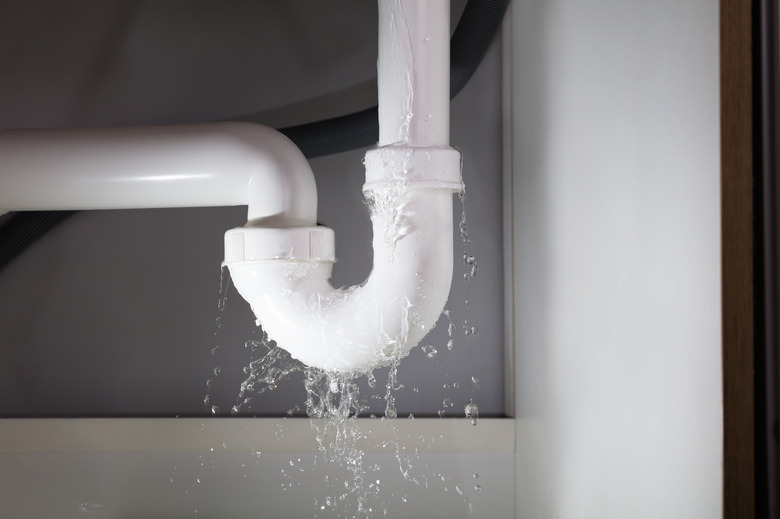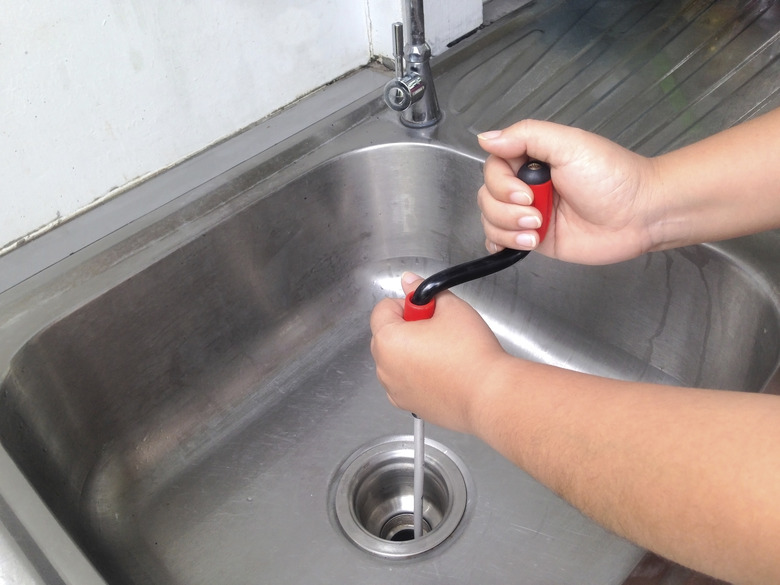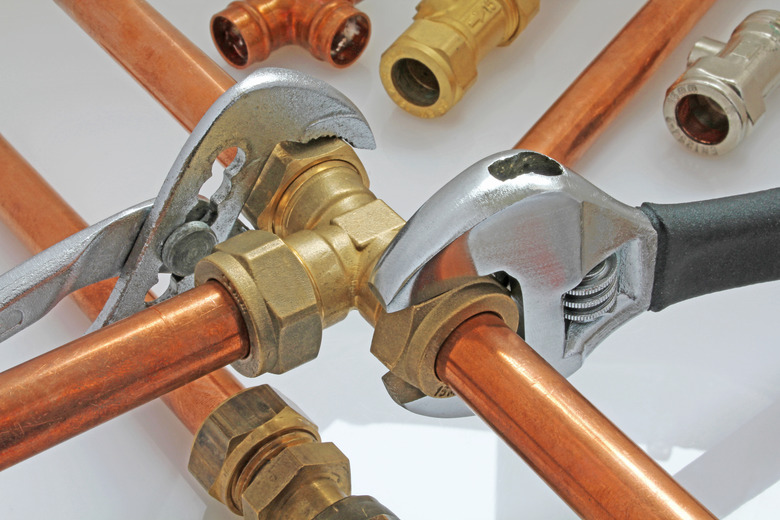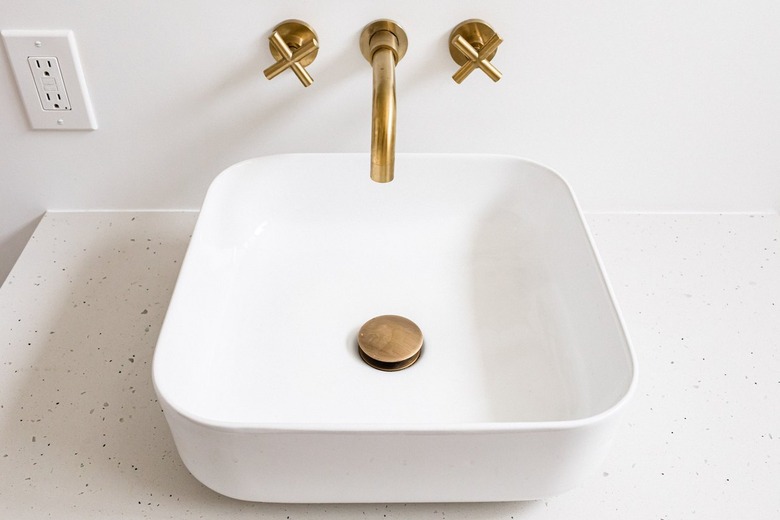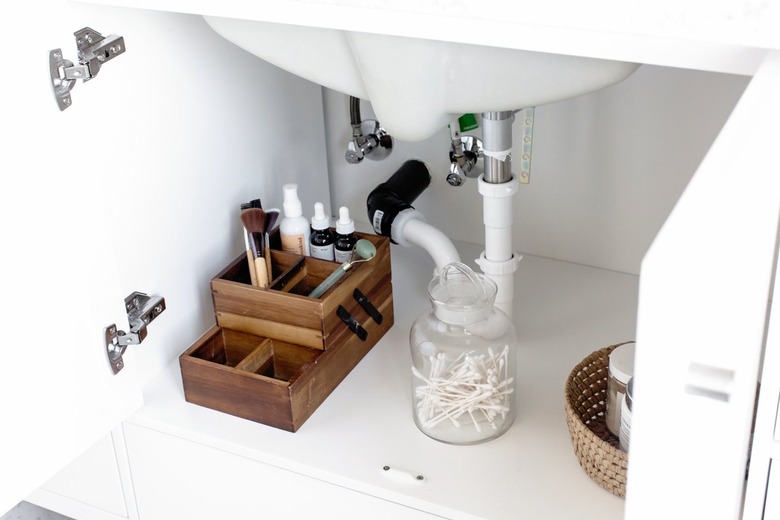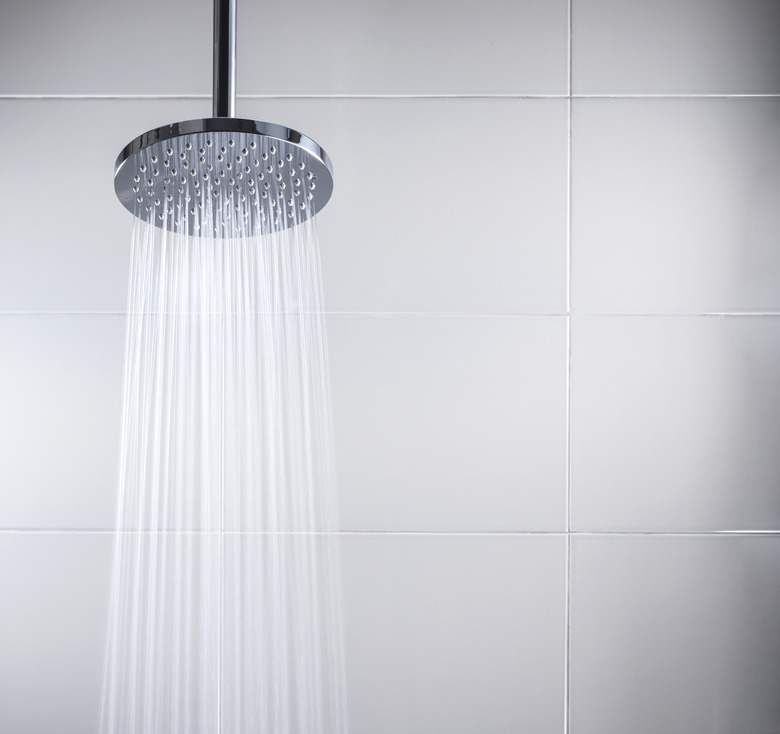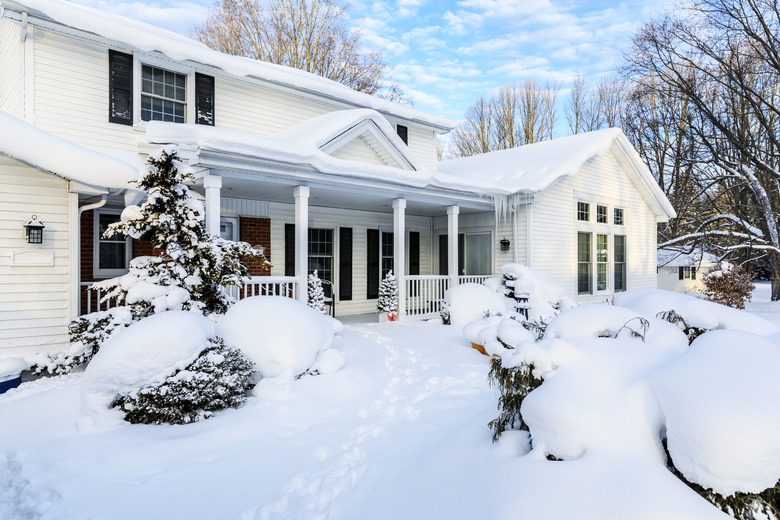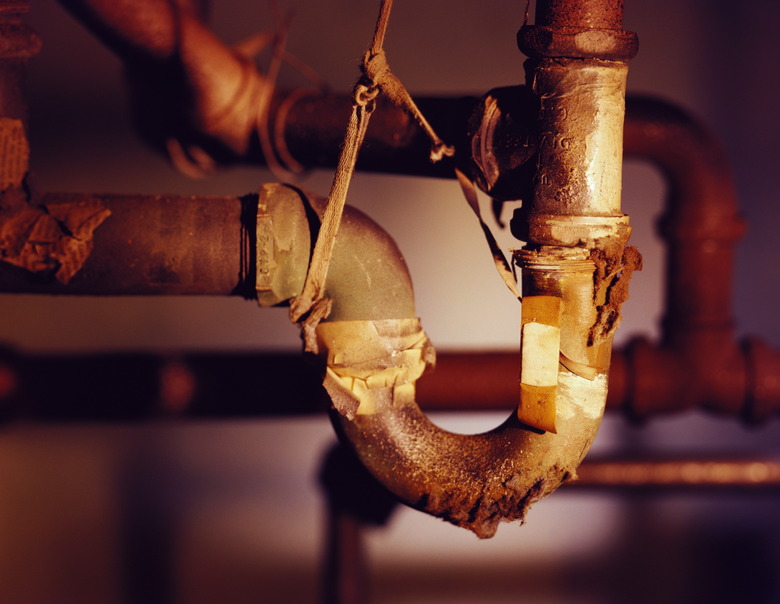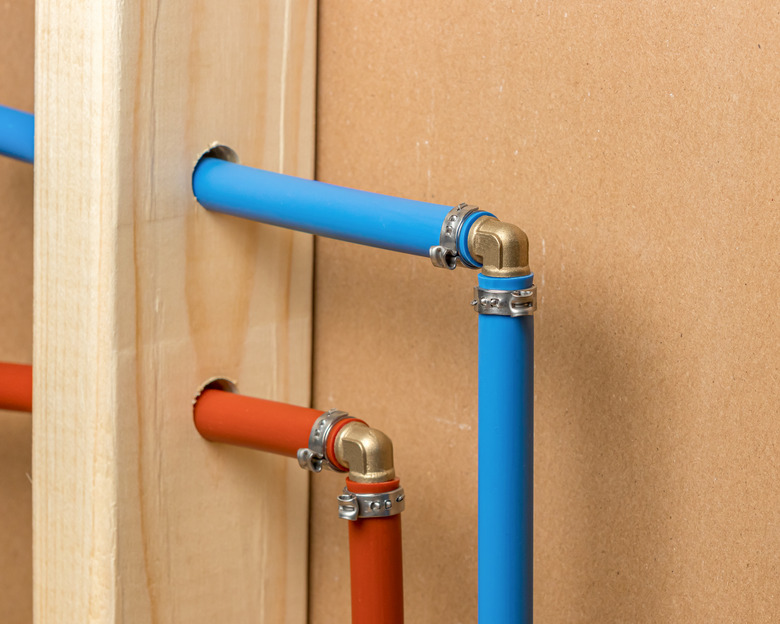8 Common Causes Of A Leaking Pipe (And How To Fix The Problem)
We may receive a commission on purchases made from links.
A leaking pipe isn't just a hassle: Leaks can cause serious water damage to your home, ruining walls, flooring, and cabinetry and even causing mold growth that can endanger your health. While many pipe leaks, particularly those located within the walls, may require the assistance of a professional plumber, many of the most common causes behind a leaky pipe can at least be temporarily repaired by homeowners willing to investigate the problem.
How to Identify Where a Pipe Is Leaking
How to Identify Where a Pipe Is Leaking
Unless your pipe burst open and has an obvious flow of water leaving from one specific part of the pipe, it can sometimes be difficult to identify where a specific source of moisture is escaping from a leaking pipe. To identify the actual location of the leak, dry off the pipes with a towel and use tissue paper to blot along the area to find out where the leak is coming from.
If the leak is in a drain assembly or a drainpipe, start by closing the sink stopper and filling up the sink. Let the water stand for five minutes to see if the water is leaking around the sink drain assembly. If the tissue remains dry, this means the leak is somewhere in the drain line. Unplug the sink and turn on your faucet to allow a steady stream of water to flow down the drain and then use your tissue to determine where in the drain line the pipe is leaking.
1. Clogs in Pipes
1. Clogs in Pipes
A clog in your pipe can cause increased pressure, which may result in joint leaks or burst pipes. Clogs can be prevented by putting hair traps in your drains to prevent hair or other debris from going down the drain. Clogs are fairly obvious because the water in your sink or tub will start taking dramatically longer to drain out. If your sink is draining slowly, avoid using any chemical drain cleaners, as these contain corrosive chemicals that may help with the clog but can damage pipes over the long run. Instead, use a plunger to loosen the clogged materials and then pour boiling hot water down the drain to erode things like grease and old soap. For stubborn clogs, use a drain snake to clear the drainpipe.
Once a clog has already caused a leak, you can repair the pipe or replace it. For P-traps under the sink, you can replace the trap with new parts from your local home improvement store. For sewage pipes deeper in your plumbing system, contact a plumber.
2. Loose or Broken Water Connectors
2. Loose or Broken Water Connectors
The supply valves and supply line hoses that bring water into faucets and other fixtures can become loose over time or can just wear out. When you notice water pooling up under the back of your sink or under an appliance's water supply line hookup, the valve will often be the problem. Use the tissue test to determine if the leak comes from the supply valve or from the hose.
When the leak is coming from the valve stem, try tightening the packing nut just behind the handle, and if that fails to fix the problem, the valve should be replaced. If the leak is coming from the connection between the supply line hose and the appliance, faucet, or supply valve, try tightening the compression nut to see if it has loosened by itself. If this fails to fix the problem, there may be an issue with the gasket or other interior components, and the easiest solution is to replace it with a new supply line hose.
3. Loose Drain Assembly
3. Loose Drain Assembly
You'll likely notice a drain leak when you find a puddle in the cabinet under the drain. Do a tissue test to ensure the leak comes from the drain and not the drainpipes below. To fix a leaky drain, try tightening the lock nut under the sink that secures the drain tailpiece in place.
If the leak still doesn't stop, the plumbers' putty sealing the drain flange may no longer be doing its job. To fix this issue, disconnect and remove the drain assembly and then reinstall it using new, fresh plumbers' putty to seal the drain.
4. Insufficiently Tightened P-Trap Joints
4. Insufficiently Tightened P-Trap Joints
If water is dripping from the joints in your P-trap and you have PVC pipes, this typically means the pipes have become misaligned, the rubber washers have deteriorated, or the slip nuts securing the pipes in place have become loose. Start by confirming the pipes are properly aligned and check that the washers are still malleable and not cracked. Then, tighten the slip nuts by hand. Deteriorated washers can be replaced with new washers of the same size. If you're still noticing a leak after tightening a slip nut, try applying plumbers' tape around the threads on the threaded coupling before retightening the slip nut.
Sometimes, inexperienced DIYers use sealants on PVC P-trap pipes not knowing they should be easy to remove and replace. If the joints in a PVC P-trap are stuck together and won't budge, you may need to cut them out with a hacksaw and replace the entire P-trap.
For homes with brass or chrome drainpipes, the slip nuts may be loose, or the rubber washers may have worn out. Try to tighten the slip nuts with tongue-and-groove pliers. If this does not stop the leak, check if the washers are worn out and try applying plumbers' tape around the threads. If the drainpipes are still leaking, the joints may be corroded, and the pipe pieces need to be replaced.
If you cannot loosen the joints in a metal P-trap, call a plumber, as the parts may need to be cut out and replaced.
5. Excessive Water Pressure
5. Excessive Water Pressure
Most homes have water pressure around 40 to 60 psi, but city water pressure commonly ranges from 30 to 80 psi. Very high water pressure above 80 psi can stress pipes, fittings, and valves and can lead to leaks. Typically, the direct cause of the leak is a failed connection or valve seal, but the underlying condition that led to the failure may be high water pressure.
Signs that you may have excessive water pressure include:
- Loud shuddering noises as pipes try to accommodate excessive water flow
- A limited hot water supply when the water heater
drains too quickly - A surprisingly high water bill related to using
more water than necessary
It's easy to test your home's water pressure with a simple water pressure test gauge. If you find that your pressure is around 80 psi or above, consult a plumber. The standard solution for excessively high water pressure is to have a pressure-reducing valve installed. This goes on the main water supply pipe just after the home's main shutoff valve. It allows you to set the water pressure for all of the home's water supply.
6. Freezing Cold Weather
6. Freezing Cold Weather
When water freezes, it expands, which can cause pipes to burst. This is why it's so important to insulate water supply lines exposed to cold weather. While metal pipes are more prone to bursting because they are so rigid, any pipe can burst when exposed to enough pressure. Plastic also becomes brittle under extreme cold, making it more prone to cracks.
Pipes that have burst or cracked due to cold weather must be replaced. Do not use a temporary repair patch or similar quick fix for water supply piping, as this is likely to lead to leaks in the future.
7. Corrosion in the Pipes
7. Corrosion in the Pipes
While it's well known that galvanized steel pipes can rust, copper pipes can also suffer from corrosion even if they don't actually rust. Corrosion can cause leaks as the material degrades.
Many people fail to recognize their pipes are suffering from corrosion until they actually start leaking. Other signs you may have corrosion in your pipes include:
- Discolored water
- A metallic smell or taste in the water
- Loud clanks, bangs, or gurgles in the pipes
- A change in the color of the pipes
—
greenish/blue in
copper pipes and bumpy red in steel pipes
- Fluctuations in the temperature of hot water
coming from the faucet, as anti-scald devices have been plugged up - Poor water pressure due to corrosion clogging
the pipes
Corroded pipes need to be replaced by a plumber who can help identify if other parts of your plumbing are also suffering from corrosion. If necessary, you can temporarily repair corroded pipes using the same methods as for pipes damaged by excess water pressure but do not wait too long to contact a plumber.
8. Kinks in PEX Pipes
8. Kinks in PEX Pipes
PEX pipes are prone to kinking, which will reduce your water pressure. While some people recommend repairing kinks with a heat gun, this requires a very high temperature that must be precisely correct, and heating can cause thermal degradation that can shorten the life span of the pipes. For this reason, it is typically better to replace the kinked section and route the pipe properly to avoid any sharp bends that caused kinking in the first place.
References
- Home Depot: How to Fix a Leaky Pipe
- HomeTips: How to Fix Water Pipe Leaks & Problems
- HomeTips: How to Fix a Leaky Sink Trap
- Tubomart: How to Repair a PEX Pipe
- Viega: Why the Best Repair for Kinked PEX is a Fitting
- Smith's Plumbing Services: Four Signs Your Water Pressure is Too High
- Varney: 7 Signs of Pipe Corrosion
- Mike Diamond: How to Unclog Your Shower Drain
